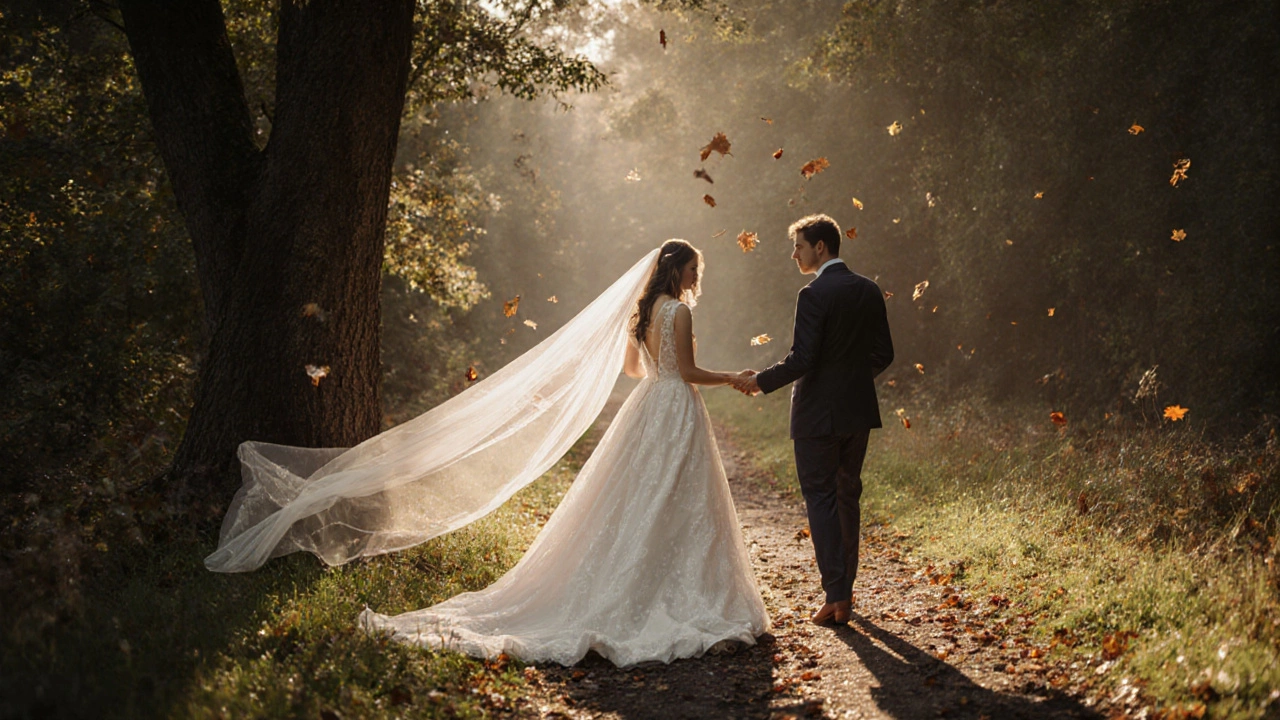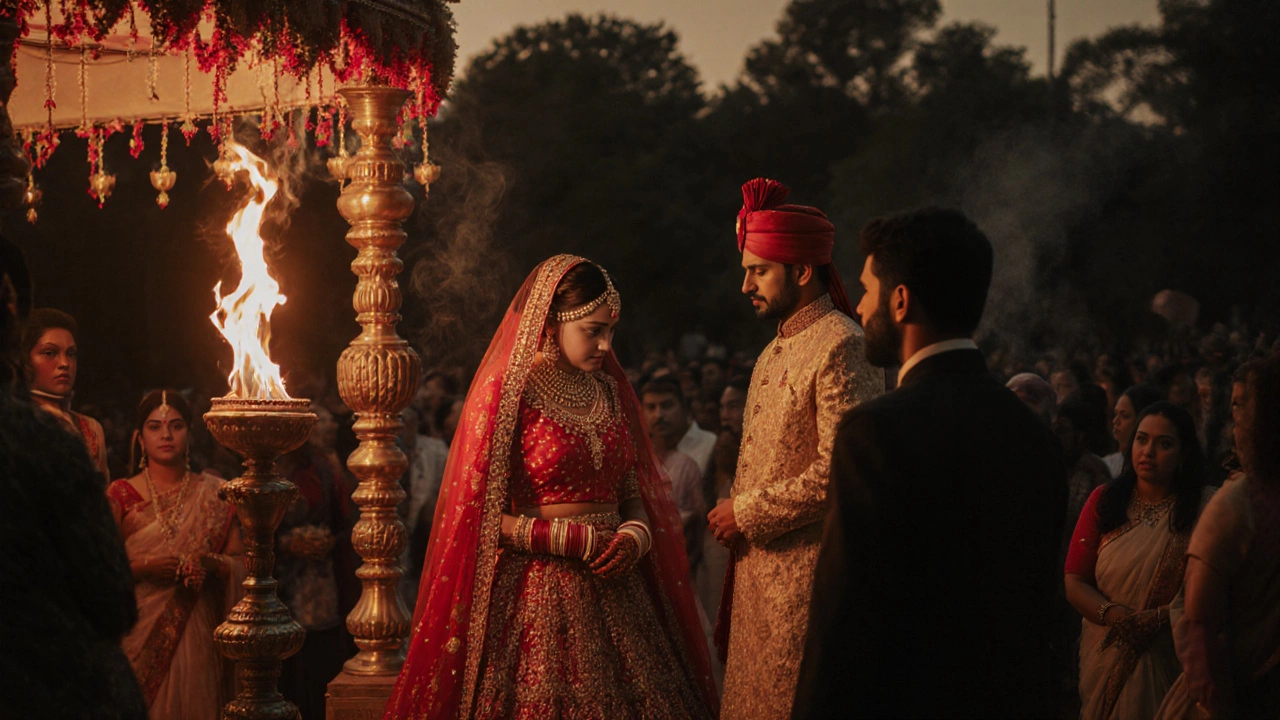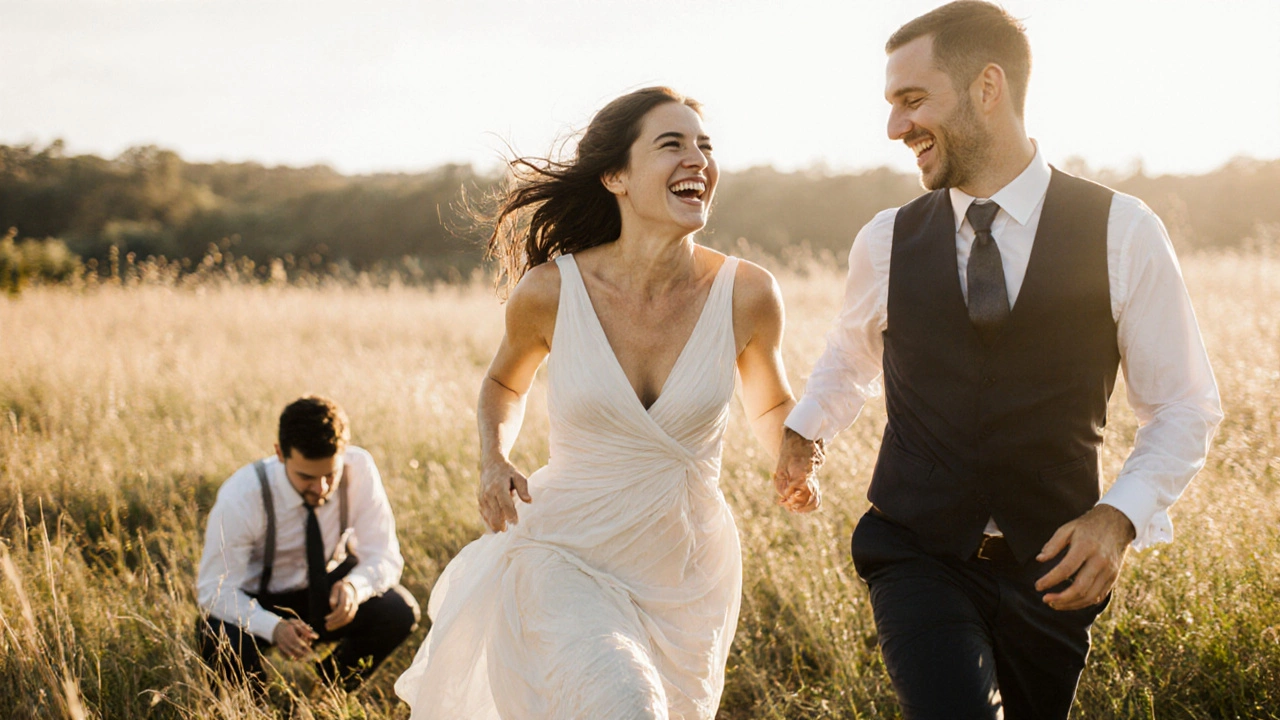What Is the Superstition About Seeing the Bride Before the Wedding?
 Nov, 8 2025
Nov, 8 2025
First Look Impact Calculator
How much will a first look reduce your wedding stress?
Based on a 2023 University of Leeds study, couples who do a first look report 37% lower anxiety on their wedding day.
Your Personalized Wedding Stress Reduction Report
Ever heard someone say, "Don’t see the bride before the wedding"-and felt a chill run down your spine? It’s not just a rule for photographers. This superstition has been passed down for generations, especially in Western cultures. But why? And does it still matter today, especially when pre-wedding photoshoots are as common as Instagram filters?
Where Did This Superstition Come From?
The idea that seeing your future spouse before the ceremony brings bad luck dates back to arranged marriages. Back in the 17th and 18th centuries, couples often didn’t meet until the wedding day. Families worried that if the groom saw the bride beforehand and didn’t like what he saw, he might back out. That could ruin the bride’s reputation, leave her family shamed, and cost them money spent on the wedding. So, the solution? Keep them apart until the ceremony.
Over time, this practical concern turned into a magical belief. People started thinking that seeing each other before the vows would jinx the marriage. Some said it would make the groom lose his courage. Others believed it would bring misfortune, illness, or even divorce. It wasn’t about love-it was about control, fear, and tradition.
Why Do People Still Believe It?
Even in 2025, with couples planning weddings on TikTok and sharing their first looks on YouTube, the superstition lingers. Why? Because rituals give us comfort. Weddings are high-stakes events. Emotions run high. Families want everything to go perfectly. So when someone says, "It’s bad luck," it’s easier to say "okay" than to risk upsetting Aunt Margaret or the wedding planner who swears by tradition.
There’s also the power of confirmation bias. If a couple sees each other before the wedding and something goes wrong-say, the cake collapses or it rains-they’ll remember it as proof. If nothing bad happens? They just call it a great day. The superstition survives because it’s emotionally sticky, not because it’s logical.
Pre-Wedding Photoshoots Changed Everything
Today, most couples do a pre-wedding photoshoot. It’s not just a trend-it’s a standard part of wedding planning. These sessions happen weeks or even months before the big day. They’re often romantic, playful, and full of natural moments. Many photographers recommend them because they help couples feel more comfortable in front of the camera on the wedding day.
So if you’ve already had a full photoshoot together-holding hands, laughing, even kissing-how is seeing each other on the wedding morning any different? It’s not. The superstition was built for a time when couples had no visual connection before the altar. Now, they’ve seen each other in sunsets, in raincoats, in cozy sweaters. The magic is gone.

What Do Wedding Professionals Think?
Most wedding photographers in the UK, including those in Birmingham, have seen it all. One photographer I know, who’s shot over 150 weddings, says: "I’ve never seen a marriage fail because the couple saw each other before the ceremony. But I’ve seen dozens ruined because the groom was stressed, the bride was crying, and they hadn’t had a moment to breathe together."
Professional wedding planners now actively encourage "first looks." It’s not just about photos-it’s about emotional pacing. When couples meet privately before the ceremony, they get to hug, cry, laugh, and calm down. Then they walk into the reception ready to celebrate-not overwhelmed.
And here’s the kicker: couples who do a first look often spend less time on photos after the ceremony. That means more time with guests, more dancing, more cake.
Does It Really Affect the Marriage?
There’s no scientific evidence that seeing your partner before the wedding affects the success of your marriage. A 2023 study from the University of Leeds tracked 1,200 couples who married in the UK over five years. Half did a first look. Half didn’t. The divorce rate? Identical-11% in both groups.
What did differ? Stress levels. Couples who did a first look reported 37% lower anxiety on their wedding day. They felt more grounded. More connected. More ready to enjoy the day.

What About Religious or Cultural Beliefs?
Not every culture follows this superstition. In Jewish weddings, the groom traditionally doesn’t see the bride at all until the ceremony-but that’s part of a sacred ritual, not a superstition about bad luck. In Indian weddings, the bride is often veiled until the ceremony, but that’s about modesty and symbolism, not fear.
Some religious traditions do forbid seeing each other before the wedding. If your faith or family holds this as a core value, then it’s not about luck-it’s about respect. But if you’re not bound by religion or strict cultural rules, then the "bad luck" idea is just a story.
So, Should You See Each Other Before the Wedding?
Here’s the real answer: it’s your day. Not your grandma’s. Not your wedding planner’s. Not your Instagram followers’.
If you want a quiet moment alone before the ceremony-go for it. Take five minutes. Hold hands. Say a few words. Let the nerves melt away. That moment is yours.
If you’re worried about tradition, here’s a compromise: do a first look, but keep it private. No guests. No cameras. Just you two, maybe a tree, and a quiet path. That way, you honor the spirit of the tradition-keeping the public reveal special-while still giving yourselves the gift of calm.
What’s the Real Bad Luck?
The real bad luck isn’t seeing your partner before the wedding.
The real bad luck is letting fear, outdated rules, or other people’s opinions steal your joy.
Weddings aren’t about avoiding curses. They’re about starting a life together. And if you’ve already shared a hundred smiles in a field, seen each other in messy hair and bad lighting, and still choose to say "I do"-then you’ve already broken the spell.
You don’t need magic to make your marriage work. You just need each other.
Is it really bad luck to see the bride before the wedding?
No, it’s not bad luck. The idea comes from old arranged marriage traditions where the groom might back out if he didn’t like the bride’s appearance. Today, it’s just a superstition with no basis in reality. Studies show no link between seeing your partner before the wedding and marriage success.
Do most couples do a first look now?
Yes, especially in the UK and US. Around 70% of couples now choose a first look before the ceremony. It helps reduce stress, improves photo quality, and gives couples a private moment to calm down before facing family and guests.
Can I still have a surprise entrance if I do a first look?
Absolutely. A first look is private-just you and your partner. The surprise entrance at the ceremony is still intact. Guests don’t see you until you walk down the aisle. You’re not giving up the big reveal-you’re just adding a meaningful moment before it.
What if my family insists I don’t see my partner before the wedding?
Respect their feelings, but set your own boundaries. You can say, "I understand this is important to you, but this is my wedding. I’d like to have a quiet moment with my partner before the ceremony-it helps me feel calm." Most families will accept that if you’re calm and kind about it. If they push back, remember: your marriage is yours to build.
Does seeing the bride before the wedding ruin the photos?
Not at all. In fact, couples who do a first look often have more natural, emotional photos. The tension is gone. They’re relaxed. They smile more. Photographers say these images are usually more authentic than the stiff, nervous shots from the ceremony.
Is this superstition only for brides?
Yes, traditionally. The rule was always about not seeing the bride before the ceremony. There’s no equivalent superstition about the groom being seen. That’s because the tradition was designed to protect the bride’s reputation, not the groom’s. Today, it’s mostly treated as a mutual rule-but it’s not based on logic.